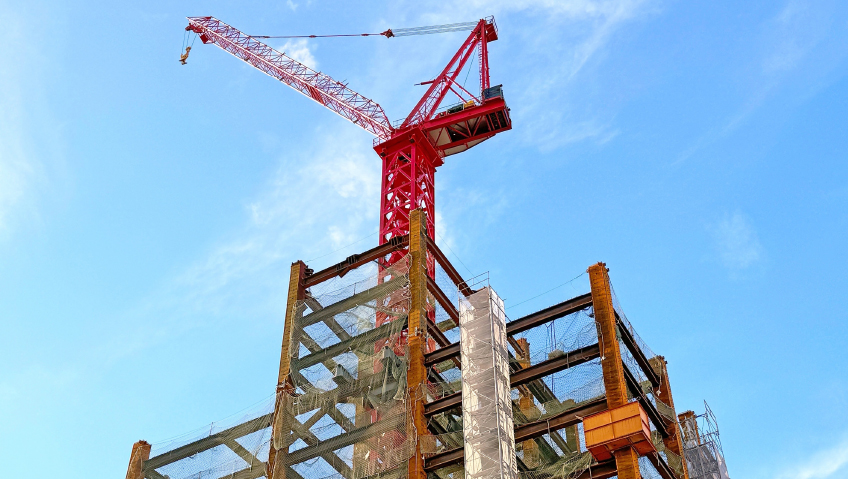Construction professionals know how much time and money can be wasted when, a few feet into onsite digging, the crew hits something that they should not have. From protecting subsurface infrastructure to finding unusual artifacts, Civil & Environmental Consultants, Inc.’s service takes the frustration and guesswork out of protecting utilities when digging on construction sites.
Civil & Environmental Consultants, Inc’s (CEC) Subsurface Utility Service minimizes risk on construction projects and does much more. The company’s diverse service portfolio is exactly why construction specialists do not need any other geospatial or survey contractors. The employee-owned civil and environmental engineering consultant’s team of more than one thousand serves clients from twenty-eight facilities stretching across the United States.
The Pittsburgh, Pennsylvania-based firm was founded in 1989 by a group of four engineers and scientists. And, because its multi-disciplinary teams specialize in solving complex challenges, the company is especially popular among construction firms for its skill sets, expertise, and advanced technological capabilities.
The company describes itself as a project lifecycle firm. “We have people working for us who are experts with years of experience in all phases of most [types of] project,” says Brian Souva, a vice president in the company’s Survey/Geospatial practice. As a result, the CEC team of geospatial professionals, engineers, scientists, environmental due diligence professionals, site assessment professionals, and individuals in countless other disciplines saves project owners and project managers the hassle of coordinating with a multitude of separate service providers.
CEC handles all tasks that are involved in ensuring that a site has been sufficiently studied in terms of surface, subsurface, infrastructure and environmental assessments. “It can be cumbersome for clients to manage many outsourced relationships, and then they don’t have continuity throughout the project [with regard to] the history of what happened from the beginning to the end. We pride ourselves on having knowledgeable people in-house at every phase of a project’s lifecycle,” says Emily Chiodo, Senior Marketing Communications and Public Relations Manager.
This is why the company’s services also include preliminary tasks like permitting and design. “Whether it is a mining project or a real estate project, there’s always a lifecycle. We work with our clients from the beginning to delivery and even beyond to assist with operations, monitoring and compliance, and even closure or retirement of their assets,” she adds.
Building on a site without knowing what the situation is beneath it is never ideal. Therefore, according to Souva, who is a professional land surveyor, the company’s work is mainly focused on managing risk. At the start of projects, after confirming ownership, CEC locates and maps underground utilities, voids, concrete substructures, pipelines, underground storage tanks, and even the boundaries of gravesites. As most utilities are typically located beneath roadway tarmac, multi-colored paints are used to mark each utility pipeline like water, gas, and others. Once this is done, the outlines are surveyed and mapped.
“What you end up with is an accurate picture of what the underground utilities for that project site look like. Utility records are usually very old or [passed down by] word of mouth. [Often] such records aren’t very accurate,” says Andy DeGroat, a senior principal and the geospatial practice leader for CEC’s operations in the Carolinas. Once the geospatial data is collected, designers then employ this to develop plans that inform the construction contractor of the surrounding underground and other structures.
To achieve all its great feats, CEC invests in quality technology. It uses uniform software platforms for easy collaboration between its regional operations and keeps its equipment the same across the business, saving time and assuring ease of use. For its subsurface utility engineering, CEC uses technologies that include several types of electromagnetic locating equipment, various frequencies of ground penetrating radar to help it find structures like underground storage tanks, and different pipe cameras.
The company performs ground-penetrating radar scans on roadways, bridge decks, and even walls. “We’re nimble in terms of where our people can go, and we have the manpower to send enough people out to complete even tall orders on short deadlines,” says Chiodo. Whatever its clients need, CEC can offer a one-stop-shop experience.
The company’s in-house depth of bench “better positions us to see that everything goes smoothly because we have collaboration taking place. When [a company] doesn’t have this level of collaboration, they may not identify potential hurdles early or arrive at better solutions derived from multiple points of view. This is why we bring our disciplines together to talk about how they all can serve a particular industry’s needs,” says Chiodo.
CEC’s comprehensive services even include a fully equipped archaeological team with historical preservation professionals and scientists in its cultural resources department. This group ensures that the firm’s work remains in line with the National Historic Preservation Act, the National Environmental Policy Act, and more.
The company has found many interesting artifacts over the years while scanning areas for utilities. One such find turned out to be antique trolley rails used to haul goods from one side of town to the other in Charlotte, North Carolina’s gold mining days. The track went straight past the Federal Reserve offices.
CEC’s service is known throughout the industry, landing the team several accolades over the years. Some more recent acknowledgments include reaching #88 on Engineering News-Record’s ‘Top 200 Environmental Firms’ list and #96 on Engineering News-Record’s ‘Top 500 Design Firms’ list for 2021 and, in recognition of what a great place it is to work, CEC was recently listed among the Pittsburgh Post-Gazette’s top workplaces.
But the company serves more than the construction industry. Clients include respected firms in the manufacturing, mining, oil and gas, power, real estate, and solid waste industries as well as entities in the public sector. Other services include air quality, civil engineering, ecological sciences, environmental engineering and sciences, manufacturing infrastructure services, survey/geospatial, waste management, and water resources. Each of these categories comprises a host of sub-services led by carefully chosen professionals with a range of academic backgrounds.
The company’s strength is in its diversity and in the fact that its teams come up with solutions specifically tailored to each industry and even each client it serves. Collaboration between disciplines teaches “our folks to think from the clients’ perspective. We are tailoring what we do and our discussions around how each industry functions and what their latest trends are so that we can be adaptive,” Chiodo adds.
Considering the quality, scope, and reach of CEC’s services, it stands to reason that many of its clients, even national ones, have been with the company for several decades. Relationships matter and Souva is a great believer in speaking with customers in person. “It’s about the [sincere, personal] relationship. It’s not always about the project. I see this as being part of my lateral management approach. Working with us is like working with a friend,” says Souva.
Despite the impression one might get from its size, the company works as one big family. For this reason, personal accountability is a big deal, and so is safety. In a bid to fortify and communicate its extensive safety protocols, employees receive thorough training and refresher courses, and clear procedures are set out for tasks. On the odd occasion that accidents do happen, the sequence of events is carefully studied and protocols further developed. It is always looking to develop its skills and capabilities further.
Around sixty percent of its people hold stock in the company, and it is always hiring thanks to continued stable growth throughout its history. “We provide a top-notch opportunity for folks who are looking for a place to build a long-term career,” says Chiodo. For Souva, the company’s different locations’ ability to pull together and cultivate shared solutions from across the country is both unique and inspiring.
DeGroat joined the firm not long ago. “I can’t tell you how many times I’ve looked at a site and found a person who [specializes in a service] that I could sell on to another client somewhere else in the country,” he says. “At the same time, it’s all very personal. I know people by name. I call them, and we get together. We sit down and talk about what we’re doing. It’s very refreshing to be here.” Considering how interesting its projects are, the work naturally gets pretty cool, too, like performing LiDAR scans inside bat caves and other unusual projects.
CEC was recently called out to take care of a project in Boone, North Carolina. The facility had been a holiday resort for years and now wanted to expand and improve the existing facilities. But there were no records of its underground utilities. The CEC team rushed to their aid and located the underground infrastructure during a painstaking process that took around three months.
The company invites its adventurous thinkers to invent. There are even annual awards for the best innovators in order to inspire people to come up with brilliant solutions to clients’ big challenges, fostering creativity and perpetuating its competitive edge in the market.
Taking care of people beyond its own offices is also important for the company. Its “CEC Community” initiative reaches across the United States and allows the company to lend a helping hand and better local communities. Its activities range from improving neighborhoods to charity donations, and even volunteering skills and sharing knowledge in areas that need it.
Staying abreast of market trends means keeping up with technological developments like investing in aerial LiDAR drones that can scan hundreds of acres in a single day, improving 3D technology, and more. This commitment to growth and development is led by the company’s desire to meet the needs of its clients.
Another growth strategy the firm employs is finding great people in locations where it does not yet have a footprint but a need for its services exists. This is how it recently handled its expansion into California. It will continue to perform steady, small acquisitions to expand its capabilities strategically. And CEC is always ready to help. “If readers have any questions, they should please feel free to reach out to [us] so we can help them out. If we can’t, we’ll find somebody who can,” says Souva. “Our goal is to help people find solutions to their challenges so they can achieve their business objectives.”






